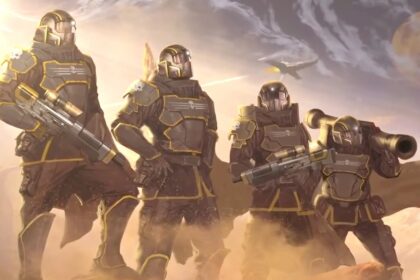Samurai Riot: Definitive Edition is a fun, arcade-like, fantastical game that reaches far.
Wako Factory’s Samurai Riot: Definitive Edition is an interesting title. In the current games industry we find ourselves in, the classic arcade style of game is not the industry spearhead it used to be. Figurehead games of the arcade heyday have mostly dwindled. Many have asked the question about whether or not these styles of games still have a place in the industry. The answer… Samurai Riot: Definitive Edition.
The game has the essence of infamous arcade games like Streets of Rage, where you play as either Sukane or Tsurumauru as you fight across a wide variety of enemies to the tune of fast-paced combat. But we’ll get to the gameplay, to start with, I want to cover the game’s graphics.
While this may not be the ‘most important’ aspect of the game, it is ultimately important for one thing… Nostalgia. The game’s visuals evoke an old-school aesthetic while ensuring it is still high quality. The backgrounds, character design, and enemy design are incredible, with each chapter presenting more and more breathtaking visuals, especially for a 2D title.
In terms of gameplay, the game is fast-paced and intense. The controls can be a little clunky, especially for players who are unfamiliar with titles of this genre. Though the controls eventually become easier and easier to manage. The two types of attack lend well to the ‘chess match’ style of trying to figure out how to remove enemies from the board in the most efficient fashion.
Samurai Riot also has two different characters mentioned previously. Unlike other games that may have multiple characters with minimal differences, the difference between the two characters could not be more clear through gameplay. Sukane is a much faster-paced and intense character built for movement and dodging. Tsuruamaru is a grittier character who is built around blocking and counterattacks. This isn’t even including the various other ‘character styles’ which can affect minor parts of gameplay like double jumps, more damage, more health, etc.
One of the most interesting aspects of Samurai Riot’s gameplay is the special moves, which provide very cool animations alongside bursts of damage that fully encapsulate the sort of anime-esque samurai feeling. In addition to this, in co-op, the characters can perform co-operative special moves, which are easily the most devastating in the entire game.
The game also has a massive variety of enemy types, with each stage of a chapter progressively revealing more and more. The enemies, on average, are distinct in both appearance and abilities, leading players to have to dissect and figure out different aspects of the enemies, slowly working out both their strengths and weaknesses.
However, in some cases, the enemy difference comes in a change of colour, leading to it becoming increasingly difficult to manage enemies. Moreover, some enemies only have one attack that they repeat on loop. This can become incredibly frustrating very easily as the repetitive nature of it grows tedious in an instant, especially when certain attacks cause knockdowns.
The boss fights are interesting aspects of Samurai Riot. They have unique attacks that do massive damage and have some of the coolest aesthetics in the entire game. However, they can suffer the issue of simply being a damage sponge, which can be okay, but when numerous bosses fall into this category, it can become tedious.
The thing that makes this game the most unique is the branching narrative. The game has 8 unique endings, including a co-op ending that results in the two players battling out in PVP. This adds to the replay value of the game immeasurably, or it would were the story good.
However, unfortunately, in contrast, the game’s story is without question the weakest aspect of the game. Poor dialogue (unspoken) in combination with a rather bland story just falls flat. This in conjunction with some of the tedious enemies and spongey bosses, can make this game feel more like a grind than it needs to be. I think the fault with the game’s narrative may also fall with the style of the game; the genre does not lend itself to complex moral questions, and while Wako Factory should be commended for attempting to innovate on an age-old genre, it sadly lands flat on its face.
One thing I feel should be mentioned also is Samurai Riot’s soundtrack. It is arguably the game’s best quality besides the combat. Every instrument simply works. The music is energetic, dark, and gritty all at the same time, and it without a doubt enhances the experience of playing through the title, even more so as it pays its respects to the many games of the genre before it.
Overall, Samurai Riot is a fascinating entry into the world of Streets of Rage-like titles. Its combat is fast-paced and addictive, and the inclusion of numerous characters only serves to increase the game’s replay value considerably. Moreover, the game’s art style is fantastic. Blending the art styles of old school arcade games and anime style to create a unique aesthetic that powers through the game in its entirety. The game’s enemy variety keeps things fresh for a time, but sometimes the variety is lackluster. Beyond this, many enemies serve only to attack with one simplistic attack, ultimately leading to frustration with the game.
Despite the game’s flaws, I believe I can answer the question asked at the beginning of this review. Does this style of game still belong in this industry? If the titles are anything like Samurai Riot, then the answer is a resounding yes.
Samurai Riot: Definitive Edition is available right now on Steam, Epic Games Store, and Nintendo Switch. Here at GamesCreed, we cover everything gaming. From the latest news to stellar reviews, GamesCreed has you covered.















